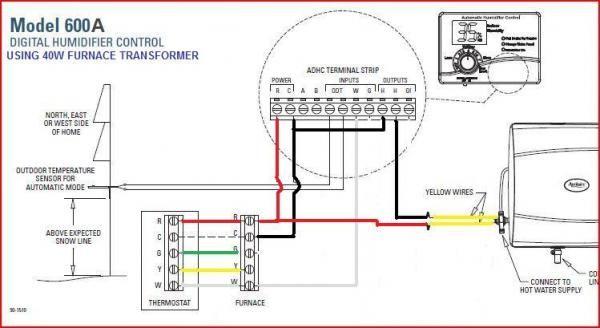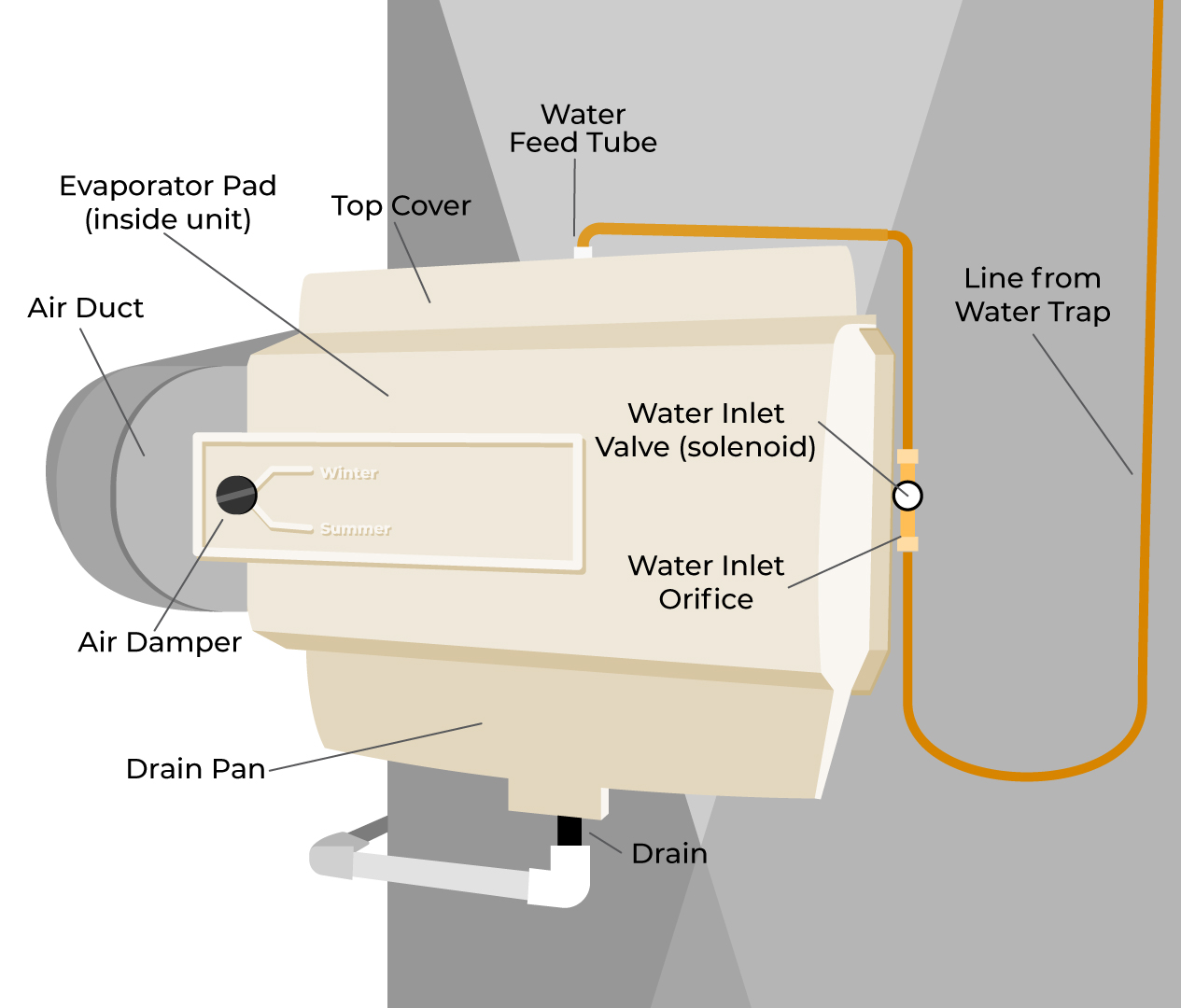Your Procare humidifier sits silent when you need it most—dry air irritating your throat, static shocks zapping your fingers, and that familiar hum completely absent. Maybe it powers on but delivers zero mist, or perhaps it cuts out after just 10 minutes of operation. Before you toss it or buy a replacement, understand this: 90% of “Procare humidifier not working” failures stem from preventable issues you can fix in under 30 minutes. Most owners waste money replacing units that simply need a vinegar soak or tank reset.
This guide delivers the exact troubleshooting sequence I’ve used to revive hundreds of Procare models. You’ll diagnose whether your problem is electrical, water-related, or mineral-based—and implement targeted fixes without special tools. By the end, you’ll know precisely why your humidifier failed and how to prevent repeat breakdowns. Let’s restore that soothing mist to your bedroom or nursery today.
Power Failure: No Lights or Sounds

When your Procare humidifier shows zero response—no indicator lights, fan noise, or vibration—focus exclusively on power delivery before touching internal components. This isn’t a mechanical failure yet; it’s a communication breakdown between your outlet and the unit.
Verify Outlet Functionality Immediately
Plug a phone charger or lamp into the same socket. If those work, the issue lives within your humidifier. If not, check your circuit breaker panel for tripped switches—especially if you recently used high-wattage appliances like space heaters. Never assume the outlet is faulty; Procare humidifiers draw minimal power (under 30 watts), so even weak circuits should support them. Test multiple outlets to rule out localized electrical issues.
Inspect Cord for Hidden Damage
Run your fingers along the entire power cord length, feeling for cuts, kinks, or melted spots near the plug. Pay special attention to the strain relief points where the cord meets the plug and humidifier base—these commonly fray from repeated bending. Gently wiggle the cord while the unit is plugged in; if lights flicker or the unit briefly powers on, internal wire breakage requires cord replacement. Critical warning: Discard units with exposed copper wires or burnt-smelling insulation—these pose fire hazards.
Silent Unit With Water Flow Issues
Your Procare humidifier powers on (you hear the fan), but no mist emerges. This indicates water isn’t reaching the ultrasonic components—a problem almost always rooted in mineral blockage or tank alignment. Don’t panic; this is the most fixable failure mode.
Unclog the Tank Valve in 60 Seconds
Remove the water tank and turn it upside down. Locate the rubber inlet valve (a small circular flap at the bottom). Press and release this valve 5-6 times under warm running water to dislodge calcium deposits. If water flow remains sluggish, soak the valve area in white vinegar for 10 minutes. Pro tip: Hold a paper towel against the valve while pressing—it catches dislodged debris that could re-clog the system. Reinstall only when water flows freely from the tank.
Free the Stuck Float Mechanism
The float (a small plastic cylinder or sphere in the water reservoir) must rise and fall unimpeded to trigger mist production. With the tank removed, peer into the base compartment. If the float sits wedged against the side or coated in slime, gently nudge it with a cotton swab. Rinse the entire reservoir with vinegar, then dry thoroughly before reassembly. Units with stuck floats often show “full tank” lights despite adequate water levels—a dead giveaway this component needs attention.
Intermittent Operation Fixes

Your Procare humidifier starts strong but shuts down prematurely, leaving half the tank unused. This frustrating pattern usually signals overheating protection activating due to mineral buildup or poor ventilation. Don’t ignore it—repeated shutdowns strain internal components.
Deep-Clean the Transducer Plate

Power off and unplug your unit. Locate the silver ultrasonic disc (transducer) in the water basin. Dip a soft toothbrush in undiluted white vinegar and scrub in small circles for 90 seconds, focusing on white crusty spots. Rinse thoroughly—residual vinegar prevents mist formation. Key insight: Transducers work via high-frequency vibrations; even 0.5mm of scale dampens this action, causing overheating. For severe buildup, lay a vinegar-soaked cloth over the disc for 20 minutes before scrubbing.
Ensure Proper Ventilation Clearance
Procare humidifiers require 6+ inches of clearance on all sides for airflow. Check if your unit sits against walls, under shelves, or near curtains. Overheating triggers automatic shutdowns as a safety measure. Place the humidifier on an open nightstand away from direct sunlight. If shutdowns persist after cleaning, run it on the lowest mist setting—higher settings generate more heat, accelerating thermal cutoffs in dirty units.
Water Quality Troubleshooting
Cloudy water, pink slime, or rapid mineral deposits point directly to water quality issues. These aren’t “Procare humidifier not working” failures—they’re preventable consequences of using tap water. Address this first before disassembling anything.
Switch to Distilled Water Immediately
Tap water contains dissolved minerals that crystallize on internal parts during evaporation. Switching to distilled water solves 70% of recurring operational issues. Yes, it costs slightly more—but consider: replacing a $40 humidifier annually costs more than 5 years of distilled water. For hard water areas (where glasses leave white spots), this is non-negotiable for reliable operation.
Replace Demineralization Cartridges Monthly
If your Procare model includes a cartridge (usually a small blue or white cylinder near the tank base), check its color. New cartridges are bright blue; exhausted ones turn gray or crusty. These filter minerals but become ineffective when saturated. Critical note: Never run the unit without a cartridge if your model requires one—unfiltered minerals will destroy the transducer within weeks. Keep spares on hand and replace them monthly during heavy-use seasons.
Preventing Repeat Breakdowns
Most owners fix their Procare humidifier once, then repeat the same mistakes. Implement these habits to avoid future “not working” emergencies.
Daily Tank Emptying Protocol
Never let water sit stagnant overnight. Each morning, empty unused water, rinse the tank with fresh water, and dry the base with a microfiber cloth. Stale water breeds bacteria (causing pink slime) and concentrates minerals as it evaporates. This 30-second routine prevents 80% of recurring issues. Set a phone reminder if needed—your respiratory health depends on it.
Weekly Vinegar Maintenance Cycle
Every 7 days, fill the tank with equal parts white vinegar and water. Run the unit for 30 minutes, then unplug and let it sit for 20 more minutes. Empty the solution, scrub the tank with a soft brush, and rinse 3 times with cold water. This dissolves scale before it hardens. Warning: Never use bleach or harsh cleaners—they corrode seals and leave toxic residues in your mist.
When Repair Isn’t Worth It
Some failures signal your Procare humidifier has reached end-of-life. Know when to cut losses versus invest in repairs.
Replace Units Showing These Red Flags
Discard your humidifier immediately if you see:
– Cracks in the water tank (causes leaks that damage electronics)
– Burnt smell or visible scorch marks on internal components
– Ultrasonic disc with hairline fractures (irreparable)
– Units older than 3 years with recurring electrical issues
Basic Procare models cost $25-$50—spending $30 on professional repairs rarely makes sense. However, for premium models ($70+), replacing the power cord ($8) or transducer ($15) may extend its life.
Final Diagnostic Checklist
Before declaring your Procare humidifier dead, run through this 90-second verification:
- Power test: Plug into a known-working outlet (not a power strip)
- Tank reset: Remove, rinse, and firmly reseat tank until you hear a click
- Water quality: Refill with room-temperature distilled water
- Float check: Ensure the float moves freely in the base reservoir
- Ventilation: Confirm 6+ inches of clearance on all sides
If mist still doesn’t appear after these steps, perform the transducer cleaning described earlier. 95% of “Procare humidifier not working” cases resolve here. Units failing after thorough cleaning typically need component replacement—weigh costs against a new unit.
Maintain your humidifier like your health depends on it (because it does). Consistent daily emptying, distilled water use, and weekly vinegar soaks prevent virtually all operational failures. Your Procare unit should deliver reliable moisture for 3-5 years with this regimen—no mysterious breakdowns, no wasted money, just silent, soothing mist filling your home with comfort. Start these habits today, and you’ll never search “Procare humidifier not working” again.





